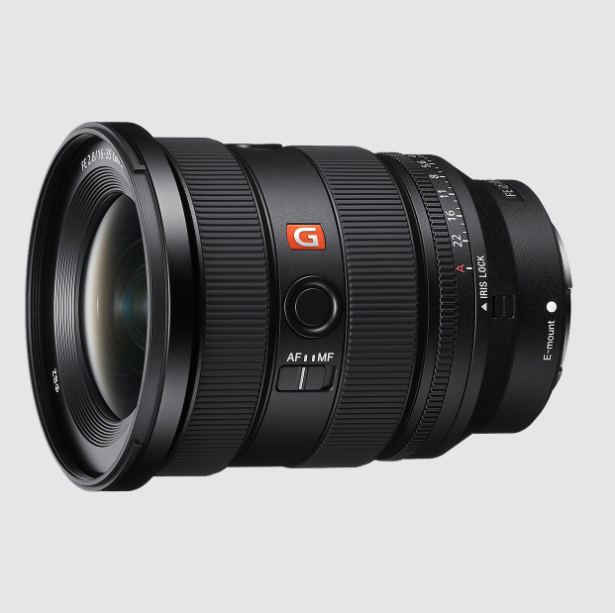Lenses are a critical component of photography and videography, whether you’re a professional photographer, a hobbyist, or just someone who loves capturing moments. The choice of the right lens can profoundly impact the quality and character of your images or videos. In this comprehensive guide, we’ll delve into the essential factors you can’t ignore when selecting lenses for your camera.
-
Lens Type: Prime vs. Zoom
One of the first decisions you’ll face when choosing a lens is whether to go for a prime or a zoom lens. Each type has its strengths and limitations:
Prime Lenses
- Fixed Focal Length: Prime lenses have a fixed focal length, meaning they don’t zoom in or out. For example, a 50mm prime lens always has a focal length of 50mm.
- Wide Aperture: Prime lenses typically have wider maximum apertures (e.g., f/1.4, f/1.8) compared to zoom lenses. This allows more light to enter the camera, making them ideal for low-light conditions and achieving a shallow depth of field for creative bokeh effects.
- Sharpness and Optical Quality: Prime lenses are known for their sharpness and optical quality. They often produce images with minimal distortion and chromatic aberration.
- Compact and Lightweight: Prime lenses are generally more compact and lightweight than zoom lenses, making them a convenient choice for portraiture and street photography.
Zoom Lenses
- Variable Focal Length: Zoom lenses offer a range of focal lengths within a single lens. For example, an 18-55mm zoom lens can cover focal lengths from 18mm (wide-angle) to 55mm (short telephoto).
- Versatility: Zoom lenses are versatile and suitable for various situations. They are particularly useful when you need to switch between different focal lengths without changing lenses quickly.
- Convenience: Zoom lenses are convenient for travel and events where changing lenses frequently might not be practical.
- Image Stabilization: Many modern zoom lenses use image stabilization (IS) technology to reduce camera shake, allowing you to shoot at slower shutter speeds without blur.
Choosing between prime and zoom Sony camera lenses depends on your specific needs and shooting style. Some photographers prefer the creative control and optical quality of prime camera lenses, while others value the versatility and convenience of zoom lenses.
-
Focal Length: Finding the Right Perspective
The focal length determines the angle of view and perspective of your images. It’s crucial to understand how different focal lengths impact your photography:
- Wide-Angle (e.g., 10-24mm): Wide-angle lenses have short focal lengths and a broad field of view. They are excellent for capturing expansive landscapes, architecture, and tight spaces. They exaggerate perspective, making objects appear farther apart than they are. This effect can create dynamic and dramatic compositions.
- Standard (e.g., 35-85mm): Standard or normal focal lengths closely resemble the human eye’s field of view. They are versatile for various types of photography, including portraits, street photography, and documentary work.
- Telephoto (e.g., 100mm+): Telephoto lenses have longer focal lengths and a narrower field of view. They are ideal for bringing distant subjects closer, making them suitable for wildlife, sports, and portrait photography. Telephoto lenses also compress perspective, making background elements appear closer to the subject.
Understanding the characteristics of different focal lengths allows you to choose the lens that best suits your subject and creative vision. Many photographers build a collection of camera lenses with different focal lengths to have flexibility in their work.
-
Aperture: Controlling Light and Depth of Field
The aperture setting on your lens controls two crucial aspects of your photography:
- Light Control: Aperture, measured in f-stops (e.g., f/1.4, f/2.8), regulates the amount of light that enters the camera. A wider aperture (lower f-number) allows more light, while a narrower aperture (higher f-number) lets in less light.
- Depth of Field (DOF): Aperture also influences the depth of field in your images. A wide aperture (e.g., f/1.4) creates a shallow DOF, resulting in a blurred background (bokeh) and a sharp subject. A narrow aperture (e.g., f/16) produces a deep DOF, focusing both the subject and background.
Choosing the right aperture depends on your creative intent and the lighting conditions. Use wide apertures for portraits with creamy backgrounds and narrow apertures for landscapes with everything in focus.
-
Image Stabilization: Sharp Shots in Any Situation
Image stabilization (IS) technology is a valuable feature in many camera lenses, especially zoom lenses. IS helps reduce the effects of camera shake, allowing you to capture sharp images in challenging conditions:
- Handheld Shooting: IS enables you to shoot at slower shutter speeds without blur, making it handy for low-light situations and situations where a tripod isn’t practical.
- Telephoto Photography: Minor hand movements can result in noticeable blur when using telephoto lenses with long focal lengths. IS helps stabilize the image and maintain sharpness.
- Video Recording: IS is essential for videographers to achieve smooth and steady footage without needing additional stabilizers.
-
Lens Compatibility: Know Your Mount
Not all camera lenses are compatible with all camera bodies. Different camera manufacturers use specific lens mounts, so it’s crucial to ensure that the lens you’re interested in matches your camera system. Some popular lens mounts include:
- Canon EF/EF-S: Used by Canon DSLRs and mirrorless cameras.
- Nikon F: Compatible with Nikon DSLRs.
- Sony E-Mount: Designed for Sony mirrorless cameras.
- Micro Four Thirds: Commonly used by Panasonic and Olympus mirrorless cameras.
- Third-party lens manufacturers like Sigma, Tamron, and Tokina also produce lenses for various camera mounts. Be sure to check compatibility before purchasing a lens.
-
Budget and Quality: Finding the Right Balance
Camera Lenses come in a wide range of price points, from budget-friendly options to high-end professional glass. When considering your budget, keep these points in mind:
- Investment: High-quality lenses can be considered an investment because they often retain their value and can serve you well for many years.
- Quality: While budget lenses can be great for beginners or specific applications, they may not offer the same optical quality, durability, and low-light performance as higher-end lenses.
- Prioritize: Determine your priorities. If you have a limited budget, consider allocating more funds to lenses rather than camera bodies, as lenses often significantly impact image quality.
- Used and Refurbished: Don’t overlook the option of buying used or refurbished lenses. Many reputable retailers offer certified refurbished lenses that save you money without sacrificing quality.
Conclusion
In conclusion, selecting the right lens involves considering lens type, focal length, aperture, image stabilization, compatibility, and budget. Each of these factors plays a crucial role in shaping your photography or videography style and achieving the desired results. Take the time to research and test different camera lenses to find the ones that best suit your creative vision and needs, and remember that camera lenses can be as important as your best Sony camera in capturing stunning images and videos.






